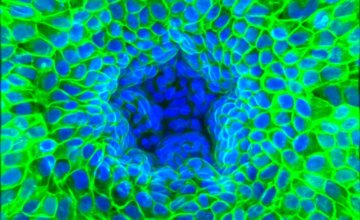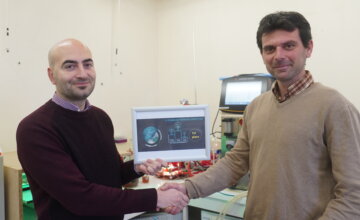Le Groupe de Neurosciences obtient deux projets européens (ERA-NET et EJP RD)
ERANET Neuron ‘Mental Disorders’: UNMET UNveiling the MEchanism(s) underlying the switch to mania during antidepressant treatment: The role of glutamate .
https://www.neuron-eranet.eu/en/839.php
UNveiling the MEchanism(s) underlying the switch to mania during antidepressant treatment: The role of glutamate ( UNMET)
Project Coordinator:Dr. Judith Homberg, Cognitive Neuroscience, Stichting Katholieke Universiteit, Nijmegen, The NetherlandsProject Partners: Prof. Dr. Laurence Ris/ Dr Damiana Leo, Neurosciences Department, University of Mons, Mons, Belgium Prof. Dr. Peter Gass, Department of Psychiatry and Psychotherapy,Central Institute of Mental Health Mannheim, Mannheim, Germany Dr. Paolo Brambilla, Dipartimento di Neuroscienze e Salute Mentale, Fondazione IRCCS Ca’ Granda Ospedale Maggiore Policlinico, Milano, Italy Prof. Daniela Jezova,Biomedical Research Center,Institute of Experimental Endocrinology, Bratislava, Slovakia
Bipolar Disorder (BD) is a severe psychiatric disorder characterized by the alternation of mania, hypomania, depression as well as mixed affective states. The lifetime prevalence of BD type I is 0.6% of the general population. The treatment of BD is difficult because of the opposite nature of its symptoms (i.e. depression and mania). Furthermore, the available treatments, all symptomatic, can cause severe side effects. A critical feature of BD is the switch to mania during antidepressant treatment. The mechanisms underlying such transitions are still elusive and represent an unmet need of pharmacopsychiatry. Accordingly, our project will address in both animal and humans the neurobiological mechanisms underlying antidepressant-induced mania, focusing on the role played by glutamatergic transmission in the prefrontal cortex-striatum-lateral habenula pathway, taking advantage of the availability of two animal models, the serotonin transporter knockout (KO) and the dopamine transporter KO rats. We hypothesize that serotonin and dopamine modulate the glutamate system thus altering the top-down control exerted by prefrontal cortex over the striatum and lateral habenula contributing to mania. UNMET will, by integrating molecular, electrophysiological and neurochemical approaches in rats together with neuroimaging techniques in rats and humans, provide a proof-of -principle of the glutamatergic mechanisms underlying mania and test an antidepressant adjunctive preventing mania.
EJP RD Joint Transnational Call for Rare Diseases Research Project (JTC 2019)
URGENT Unveiling the Role of Glutamate in dopaminE traNspoTer deficiency syndrome
Coordinator: Ris, Laurence/Leo, Damiana (BE)
Partners: Fumagalli, Fabio (IT) – Caiazzo, Massimiliano (NL) – Salahpour, Ali (CA) – Razumienè, Julija (LT)
Dopamine Transporter Deficiency Syndrome (DTDS) is a rare genetic disease affecting children with a deficit in the Dopamine Transporter (DAT), which regulates dopamine homeostasis and motor control. These children show severe motor symptoms from early infancy and worsening throughout childhood. At present, no effective treatments exist. Animal models allow to reveal mechanisms in depth using invasive methods that ethically cannot be applied to humans. Our consortium has multi-year experience in the study of rats lacking, totally or partially, the DAT, which is defective in DTDS patients. Strikingly, mutant animals replicate major symptoms found in children with DTDS, providing an excellent tool to identify novel pathophysiological pathways. To this end, by using these animals, as well as in vitro stem cell-based models reproducing DTDS mutations, we will study pathological mechanisms related to the glutamate system, the major excitatory neurotransmitter. We hypothesize that alteration of glutamate homeostasis, as shown by our preliminary data, could be rescued by memantine or bupropion. Since these drugs are commercially available, this would speed up the potential benefit for DTDS patients. Notably, our results could benefit other diseases characterized by altered dopamine-glutamate interactions such as Schizophrenia, Attention Deficit Hyperactive Disorder and Parkinson’s Disease. In the end, URGENT, via its well-integrated translational approach, holds the potential to identify meaningful markers of DTDS that could serve as guidance for more effective DTDS treatments.



